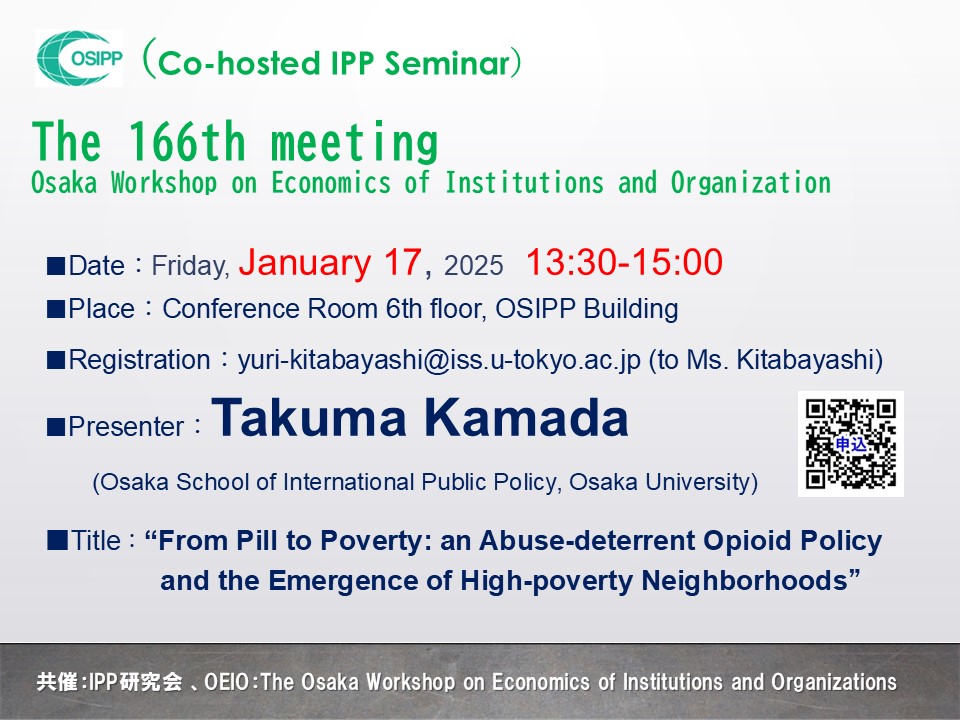
- Pre-book only
The 166th meeting jointly organized with International Public Policy Seminar
Intended for |
|
|---|---|
Date | 2025.1.17 Fri 13:30 - 15:00 |
Venue |
|
How to apply | Send an email to Ms. Kitabayashi via the address listed below. |
Contact | Ms. Kitabayashi, Institute of Social Science, The University of Tokyo |
The Osaka Workshop on Economics of Institutions and Organizations, OEIO, meets every month to exchange research ideas on institutional and organizational economics. Participants include both people specialized in theoretical research and those in empirical research. Topics of meetings might be about microeconomic theory, macroeconomic theory, or economic history..., whatever on institutional and organizational economics.
Presenter:Takuma Kamada
(Osaka School of International Public Policy, Osaka University)
Title: "From Pill to Poverty: an Abuse-deterrent Opioid Policy and the Emergence of High-poverty Neighborhoods"
Abstract: The opioid crisis has had adverse public health effects, with the White population disproportionately affected in the initial phase. In 2010, OxyContin, one of the most abused prescription opioids, was reformulated to curb its abuse.
This study demonstrates that the OxyContin reformulation contributes to the emergence of high-poverty neighborhoods. It argues that the reformulation leads opioid users to shift from prescription opioids to heroin, drawing them into crime-conducive neighborhoods where heroin is available. The findings reveal that years following the reformulation, White, but not minority, high-poverty neighborhoods emerge more in counties with initially high opioid dispensing rates relative to counties with low dispensing rates. The effects of the reformulation on high-poverty neighborhoods are greater in neighborhoods with initially high housing vacancies. Within high-vacancy areas in high-opioid counties, the availability of heroin increases post-reformulation. The reformulation induces short-distance migration among poor Whites, while it has negligible effects on poverty measures among non-migrant Whites. Taken together, the post-reformulation rise in White high-poverty neighborhoods is likely due to the migration of impoverished White people into high-vacancy neighborhoods where heroin is available, rather than White people becoming poor within their existing communities.